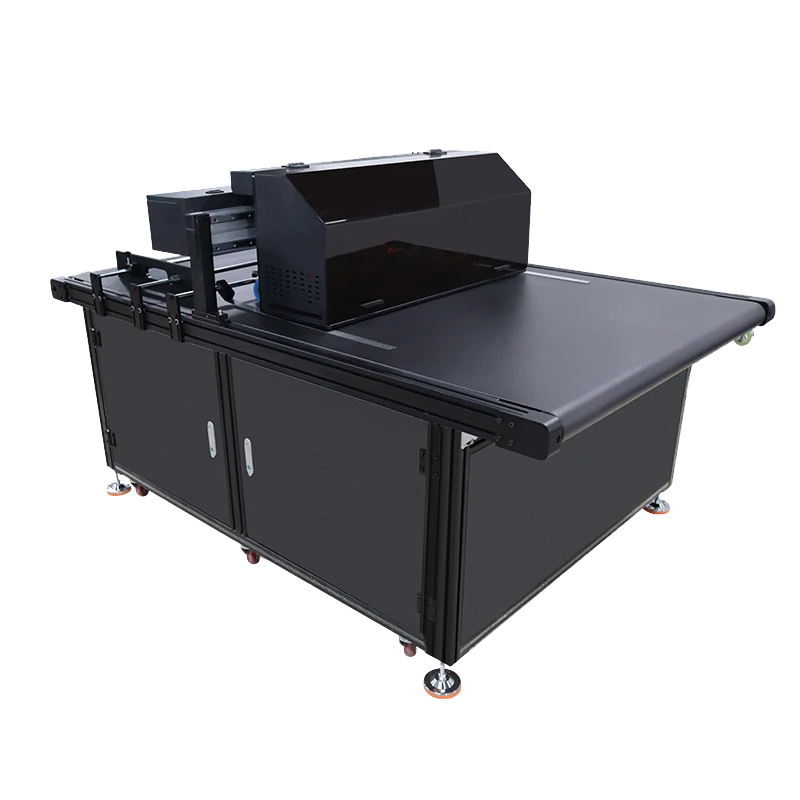In the corrugated cardboard digital printing industry, choosing the right printer is crucial to production efficiency and product quality. Duplex printers and single-sided printers are two common printing devices, each with unique characteristics and applicable scenarios. This article will explore the main differences between the two printers to help you make an informed choice.
1. Printing method
Single-sided printer
Single-sided printers print on only one side of the cardboard. It is suitable for applications that require information or patterns to be displayed on one side, such as product packaging, logos, and promotional materials. Due to their simple structure, single-sided printers are usually easy to operate and have low maintenance costs.
Duplex printers
Double-sided printers are able to print on both sides of the cardboard at the same time. This device is suitable for occasions where information needs to be displayed on both sides, such as complex product descriptions, pattern designs, or additional branding is required. Duplex printing can improve production efficiency and reduce paper usage.
2. Production efficiency
Single-sided printers
Single-sided printers have relatively high production efficiency because they only need to process one side, which is suitable for fast production and high-frequency printing tasks. However, for projects that need to be printed on both sides, single-sided printers may require additional time and resources to complete.
Double-sided printers
Due to their ability to process both sides at the same time, double-sided printers greatly improve production efficiency. When processing orders that require double-sided printing, double-sided printers can save time and labor costs, making the production process more efficient.
3. Cost-effectiveness
Single-sided printers
The initial investment of single-sided printers is usually low, which is suitable for small businesses or specific projects that require single-sided printing. The maintenance cost is relatively low, and a good cost-effectiveness can be achieved in long-term use.
Double-sided printers
Although the initial investment of double-sided printers is high, their advantages in saving paper and improving production efficiency can achieve cost recovery over a long period of time. For businesses that need to perform frequent double-sided printing, double-sided printers are generally more cost-effective.
4. Application scenarios
Single-sided printers
Single-sided printers are suitable for applications such as simple packaging, labels, and single-sided advertising, especially when high print quality is required. They are widely used in the food, logistics, and retail industries.
Double-sided printers
Double-sided printers are suitable for complex projects that require comprehensive information display, such as product manuals, brochures, and display materials. They are particularly suitable for production processes that require efficiency and environmental protection, and are widely used in the packaging industry and advertising production.
Conclusion
Whether to choose a double-sided printer or a single-sided printer depends on your specific needs and production process. If your project mainly involves single-sided printing and your budget is limited, a single-sided printer may be more suitable for you. However, if you need to improve production efficiency and achieve double-sided information display, a double-sided printer will be a better choice. Understanding the difference between these two devices can help you better meet market needs and enhance corporate competitiveness.

 EN
EN
 AR
AR
 HR
HR
 NL
NL
 FR
FR
 DE
DE
 IT
IT
 JA
JA
 KO
KO
 PL
PL
 PT
PT
 RO
RO
 RU
RU
 ES
ES
 SV
SV
 ID
ID
 TH
TH
 TR
TR
